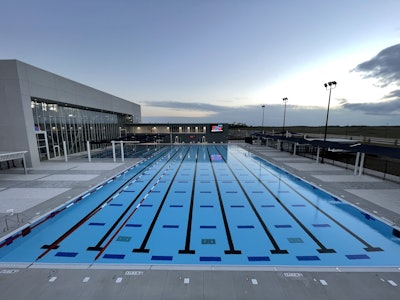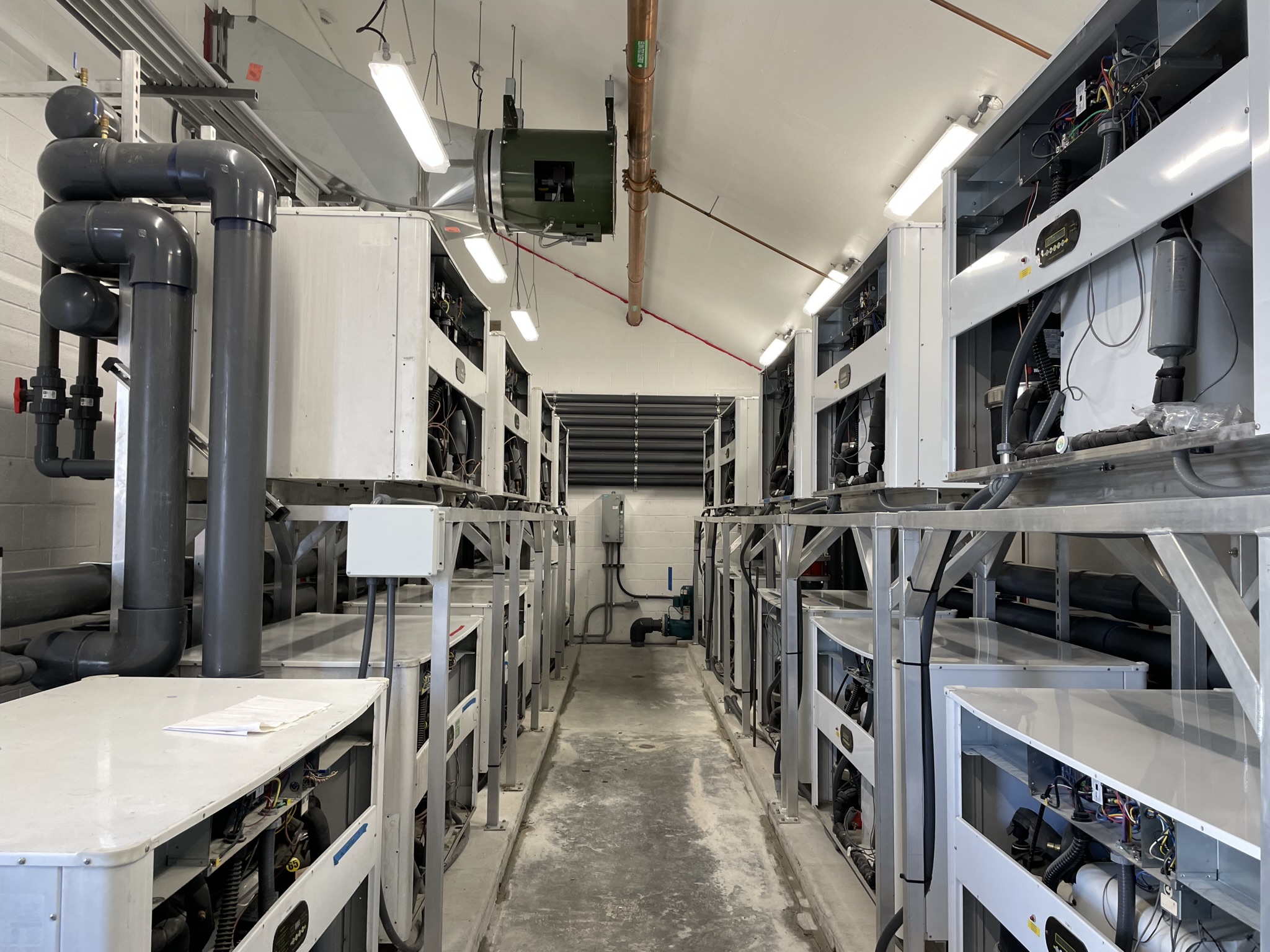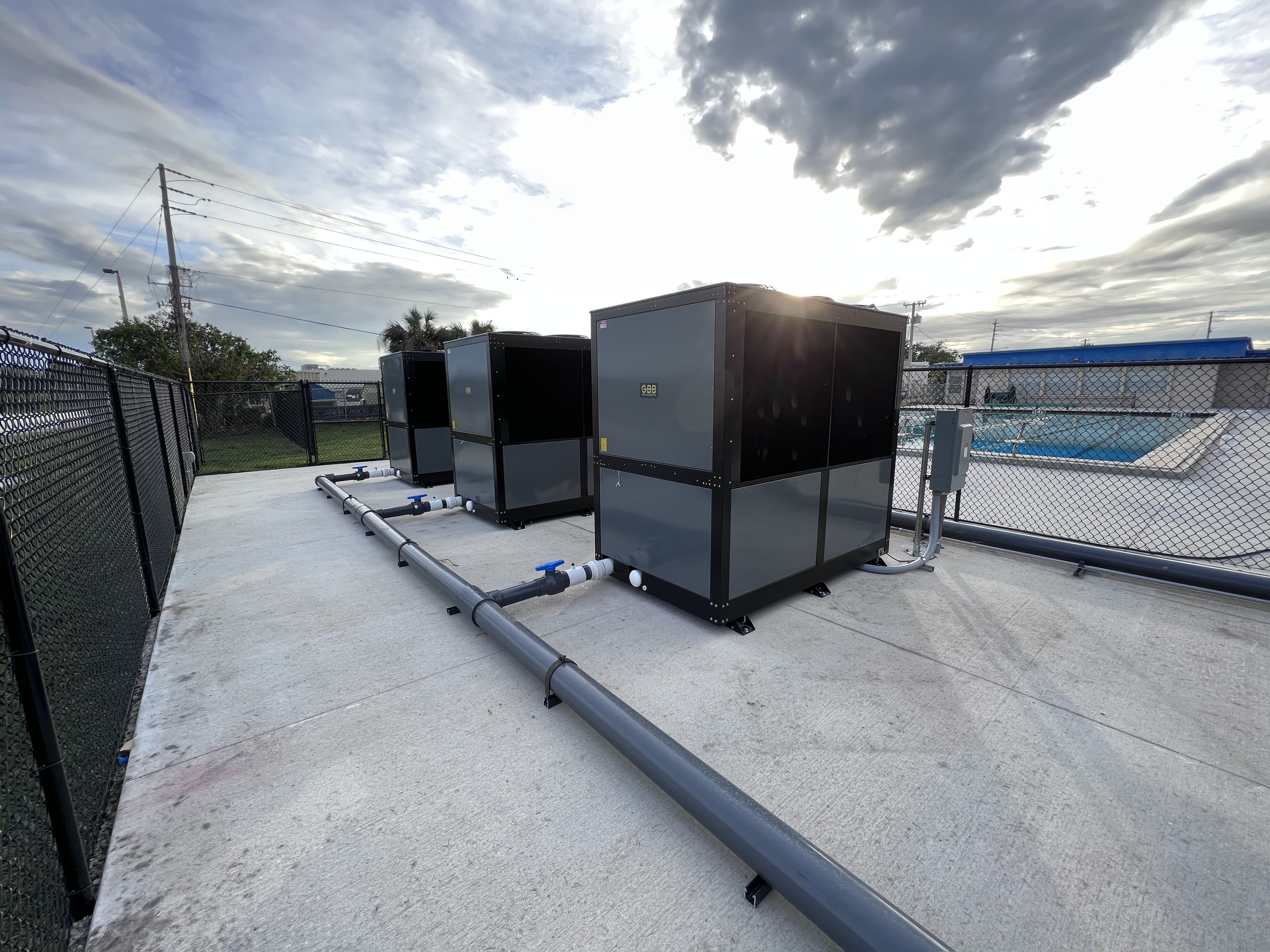

By Bo Ilgenfritz
Across the United States, municipalities, educational institutions, and private developers are seeing growing pressure to reduce carbon emissions. State and Local legislatures are beginning to adopt mandates for electrification or net-zero pledges for new development. The push toward green development is transforming the way projects are planned, funded, and designed. For aquatic facilities, this shift presents both an opportunity, and a significant challenge.
As a firm that specializes in both the design and operation of aquatic facilities, Counsilman Hunsaker has been on the forefront of this new wave. We are helping our clients explore electrification in a meaningful way by navigating the unique operational realities of pool heating. We have found that client demand can often exceed market supply based on current technologies.
The Big Picture: Why Electrification Is Gaining Steam
Electrification has become a key strategy in decarbonization. Electric heating systems reduce carbon emissions at the source. As power grids adopt renewable energy sources, electric systems offer a way to reduce the facilities overall footprint. In many jurisdictions, codes are evolving to discourage or outright ban the use of natural gas in new buildings.
The wave of electrification is well intentioned, and in many building types has minimal costs associated with the change. Aquatic Centers, however, present an unusual load profile. All pools require a significant amount of thermal energy to maintain the proper temperature for pool programming. Indoor pools require a constant heat load year-round, despite the temperature outside. Outdoor facilities require an inverse heat load to the weather outside. That is to say, they require more heat when it is cold and/or cloudy where the available thermal energy is reduced. This load profile is a particular challenge in colder climates and outdoor facilities.
Why Pool Heating Is a Special Case
Swimming pools require a stable water temperature, typically maintained 24/7. Unlike other building HVAC systems that cycle on and off through the day, pools must provide a steady and reliable output. Outdoor pool can lose heat rapidly on colder and/or windier days, which further compounds the demand.
The most common options for electrified heating are heat pumps, electric boilers, and solar thermal heaters. While these systems may be effective for domestic hot water, residential, or seasonal use, they are often space prohibitive or exceedingly expensive to operate for larger, year-round, commercial swimming pool applications. Additionally, the electrical infrastructure required to support a fully electric design may require a substantial upgrade to the facility service.

A Smarter Way Forward
At Counsilman Hunsaker, we believe in progress and pragmatism. Our role is to help clients balance long-term sustainability goals with operational and financial realities. This means that we educate our clients to identify where electric systems make sense and where alternative or hybrid solutions may be a better fit.
For example, some facilities have succeeded with all-electric heating by combining advanced energy recovery strategies with supplemental electric heating options. Other facilities have explored solar thermal heating, geothermal solutions, solar photovoltaic, or hybrid gas/electric systems. Each project is unique, and the best solution depends on multiple site-specific factors including climate, programming, operational days per year, available utilities, and budget.
Through early planning, coordination with MEP engineers, and a deep understanding of aquatic system loads, we help our clients assess the feasibility of electric heating before it becomes a problem. Our focus is on building resilient, right-sized systems that align with broader environmental goals without compromising performance or user experience.

The Role of the Aquatic Designer
One of the most important lessons from the electrification movement is that aquatic facilities cannot be treated like conventional buildings. The unique combination of operational demands requires design expertise that spans architecture, engineering, and aquatic experience. By working with an aquatic-focused design team owners can avoid the pitfalls of applying generic building solutions to a specialized aquatic environment.
At Counsilman Hunsaker, we’re proud to bring this perspective to our work. Whether we're advising on venues for World Aquatics competition, community recreation centers, wellness and therapy facilities, or hospitality pools. We approach every project with the same commitment to sustainability, safety, and long-term success.
Looking Ahead
As electrification policies continue to evolve, aquatic facilities will play a crucial role in shaping the future of sustainable public infrastructure. The key is not just to follow the trend, but to understand it, challenge it when necessary, and adapt it to serve the communities we design for.
Decarbonizing aquatics isn’t a one-size-fits-all journey. But with the right design team, it's one that can be navigated with confidence.
Bo Ilgenfritz is a Project Director at Counsilman Hunsaker, where he leads aquatic facility projects across the country with a focus on sustainable, community-centered design. Learn more at counsilmanhunsaker.com.












